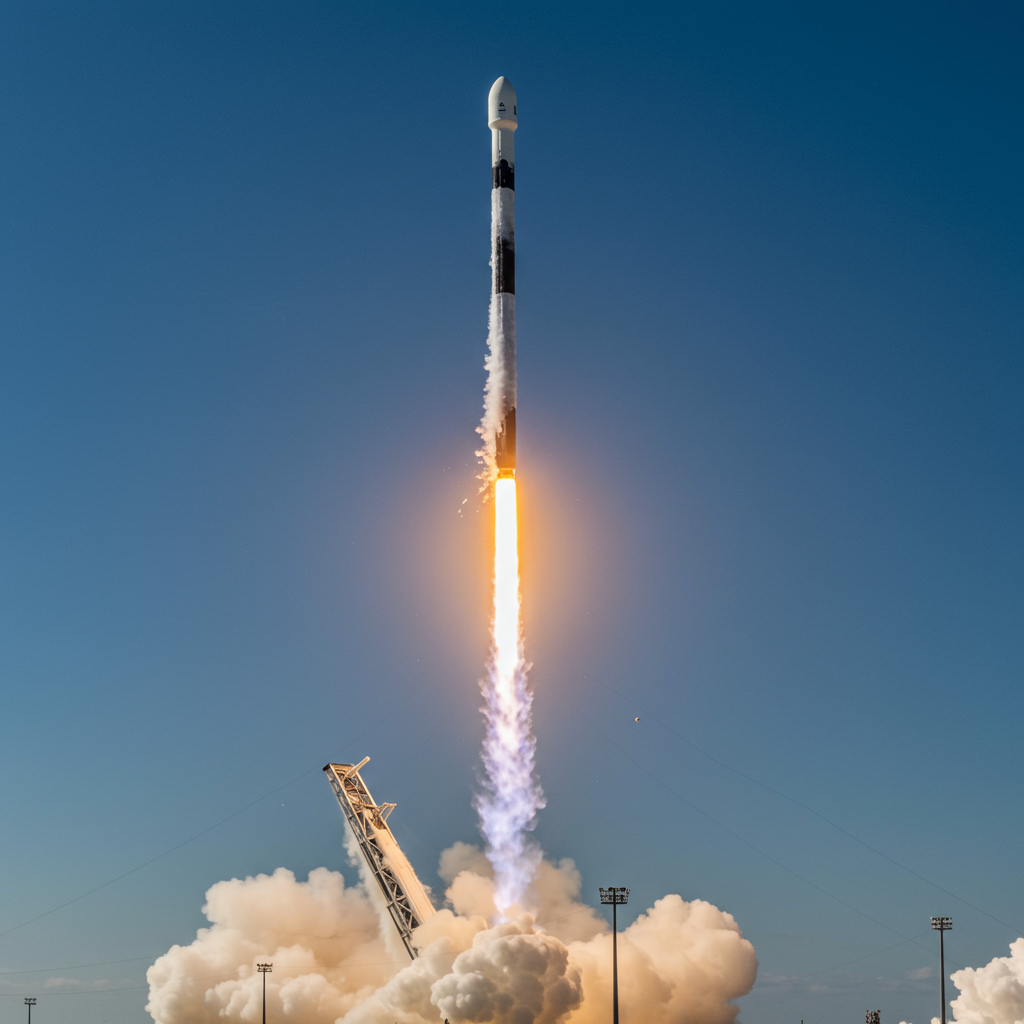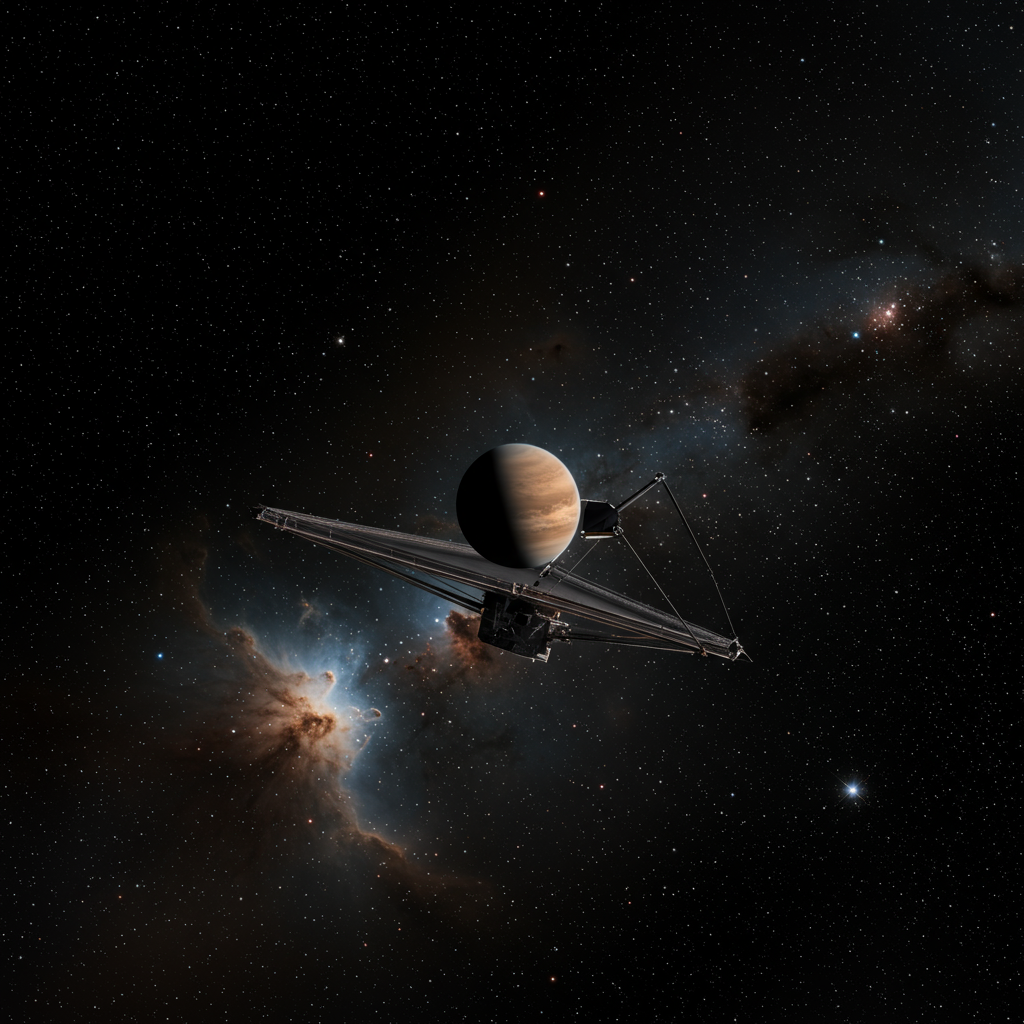SpaceX has successfully launched another batch of starlink internet satellites into orbit. A powerful Falcon 9 rocket lifted off from Florida’s Space Coast, adding more satellites to the rapidly growing constellation. This mission underscores SpaceX’s relentless operational tempo and its commitment to building a global broadband network. The launch occurred from Cape Canaveral Space Force Station.
Liftoff from the Space Coast
The latest SpaceX mission, designated Starlink 10-16, launched from Space Launch Complex 40 (SLC-40). The launch pad is located at Cape Canaveral Space Force Station in Florida. Liftoff happened precisely at 3:54 p.m. EDT (1954 UTC) on Wednesday, June 25, 2025. The weather forecast offered favorable conditions for launch. Meteorologists predicted an 80 percent chance of acceptable weather. Potential concerns involved cumulus clouds and isolated coastal showers in the area. Ultimately, the conditions were clear enough for the Falcon 9 to ascend safely.
The Falcon 9 Rocket
The workhorse of SpaceX’s fleet is the Falcon 9 rocket. This two-stage vehicle is known for its reliability and reusability. It carries payloads ranging from satellites to astronaut crews into orbit. For the Starlink 10-16 mission, the rocket performed as expected. The first stage powered the ascent through the lower atmosphere. The second stage then ignited to carry the satellites to their target orbit. This proven design is central to SpaceX’s ability to launch frequently.
Booster B1080: A Seasoned Flyer
The Falcon 9 first stage booster supporting this mission was B1080. This particular booster is remarkably experienced. The Starlink 10-16 launch marked its 20th flight into space. Such high reusability is a cornerstone of SpaceX’s strategy. It significantly reduces the cost of space access. Booster B1080 had previously flown numerous important missions. These included science missions like the European Space Agency’s (ESA) Euclid telescope launch. It also supported crew transport flights, having launched Axiom Mission 2 and Axiom Mission 3. Its 20th flight demonstrates exceptional durability and operational efficiency.
Landing Success
Following its ascent phase, the B1080 booster executed a controlled descent. Its target was one of SpaceX’s autonomous droneships stationed in the Atlantic Ocean. The vessel for this mission was named ‘Just Read the Instructions’. Approximately eight minutes after lifting off from Cape Canaveral, the booster achieved a soft touchdown on the ship’s deck. This landing was the 126th successful recovery on ‘Just Read the Instructions’. It was also the 468th booster landing overall for SpaceX to date. Recovering and reusing these boosters is key to increasing launch frequency.
Building the Starlink Constellation
The primary payload for the Starlink 10-16 mission consisted of 27 Starlink satellites. These were the Version 2 Mini Optimized design. These satellites are integral to building out SpaceX’s global satellite internet network. They provide broadband internet access, particularly to remote and underserved areas. Each launch adds capacity and coverage to the constellation. Following this mission, the active number of Starlink satellites in low Earth orbit grew significantly. Recent data indicated over 7,800 active units orbiting the planet. SpaceX aims for a constellation of 12,000 satellites. They have even sought approval to potentially launch as many as 48,000 satellites in the future. This launch is a vital step towards achieving those ambitious goals.
Rapid Operations
The Starlink 10-16 launch highlighted SpaceX’s intense operational pace. It occurred just hours after another major mission from a nearby launch pad. Earlier the same day, the Axiom Mission 4 (Ax-4) crew launched to the International Space Station. That mission utilized a Crew Dragon spacecraft named “Grace”. It lifted off from Pad 39A at NASA’s Kennedy Space Center. The rapid succession of launches from different pads showcases SpaceX’s logistical and technical capabilities at the Space Coast.
SpaceX also demonstrated incredible turnaround time at SLC-40 in the days immediately following this launch. The Starlink 10-16 mission on June 25 was the predecessor to another Starlink launch just over two days later. The Starlink 10-34 mission launched from the very same pad early on June 29. This rapid reuse of the launch complex set a new record for SpaceX. The interval was two days, eight hours, 31 minutes, and 10 seconds. This beat their previous record by nearly 30 minutes. It underscores their continuous improvement in rapid launch capabilities.
The Role of Cape Canaveral
Cape Canaveral Space Force Station remains a critical site for spaceflight. Its history is deeply intertwined with America’s space program. Today, it hosts multiple launch pads used by companies like SpaceX. SLC-40 is one of the busiest. The ability to conduct missions like Starlink 10-16 from this location is essential. It provides access to optimal orbital paths for satellite deployment. The infrastructure and range support at Cape Canaveral enable frequent and reliable launches.
Looking Ahead
Each Starlink launch pushes the boundaries of space-based communication. The growing constellation offers increasing internet availability worldwide. SpaceX continues to refine its launch and recovery operations. Booster reusability records, like B1080’s 20th flight and the SLC-40 turnaround record, show ongoing progress. Future Starlink missions will deploy more advanced satellite versions. These steps are all part of SpaceX’s long-term vision. They aim to provide affordable, high-speed internet globally. The success of missions like Starlink 10-16 is fundamental to realizing that vision.
Frequently Asked Questions
What was the main goal of the SpaceX Starlink 10-16 mission?
The main goal was to deploy 27 Starlink Version 2 Mini Optimized satellites into low Earth orbit. These satellites expand SpaceX’s internet constellation. The network provides broadband access globally. Adding these satellites increases capacity and coverage, especially in areas with limited connectivity options.
How many times had the Falcon 9 booster flown before this launch?
The specific Falcon 9 first stage booster used for the Starlink 10-16 mission was designated B1080. This launch marked the booster’s impressive 20th flight into space. High reusability is a key element of SpaceX’s strategy to lower launch costs and increase mission frequency.
What is the current status and future plan for the Starlink satellite constellation?
Following missions like Starlink 10-16, the active Starlink constellation has grown significantly. Reports indicate over 7,800 operational satellites are currently in orbit. SpaceX has stated a goal to launch a total of 12,000 satellites. They are also seeking regulatory approval for a much larger constellation, potentially reaching 48,000 satellites in the future.




